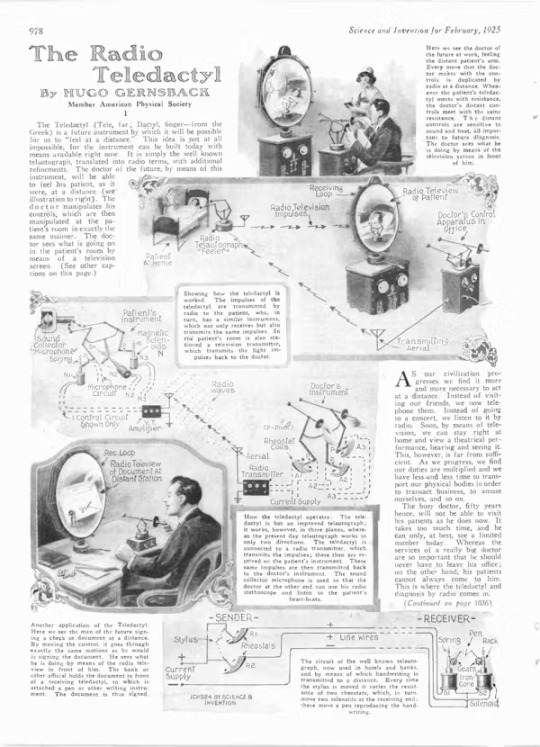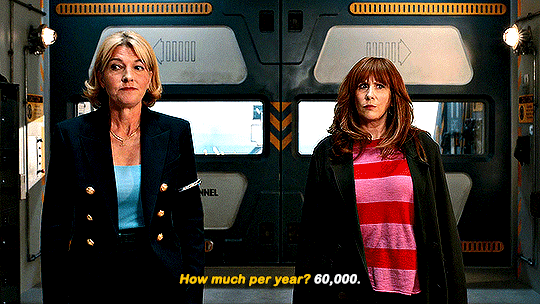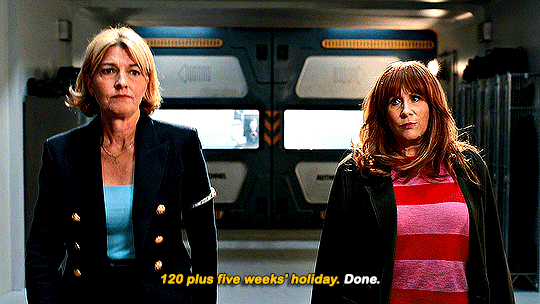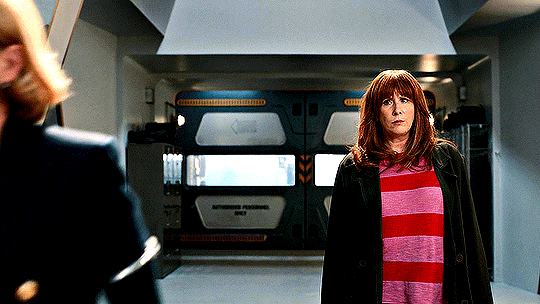Notes and visuals on Culture, Art, Science, Tech and Futurism.
Don't wanna be here? Send us removal request.
Text
youtube
I was already in my 20s when Toonami started, but I picked up what they put down from day one. I seem to remember that the block started in the afternoon and moved to late night, but I may be remembering it wrong.
This live mix session by DJ Treefer recorded at Redlight Redlight Brewpub sounds like my office on a Friday morning.
0 notes
Text
youtube
Neil deGrasse Tyson addresses NASA budget cuts.
Neil talks about this often. When I first met him, it was during the "Space Chronicles" book promo run back in 2012, and I interviewed him during an exclusive event for NASA Langley where science teachers were the audience.
People who tend to vote are often inspired when he talks about this subject. I'm not sure if enough voters are moved to make long lasting change in this area, as the NASA budget has remained in this general range for a very long time.
I do have thoughts about his decision to share his thoughts on this today.
Hopefully he will remember and mention all this the next time he guests on Rogan.
The people making these cuts are very aware that they do nothing. The confusion is the point.
In a way, he's making the point for why billionaires would want their own private space programs.
3 notes
·
View notes
Text
"Not Just Drip: New Report on How Black Men Lead Fashion and Influence the Future"
This report has been put together by the folks over at Culture Labs and UWG, an agency that is part of WPP.
0 notes
Photo

Jean-Michel Basquiat, Tuxedo, 1983
2K notes
·
View notes
Text
In over 30 years of trips now, I have never come back from Japan without records. Much like when shopping for clothes, I find it interesting that I find stuff that was made (or pressed) in the US but is sitting in Tokyo at an insanely low price.
0 notes
Text
youtube
I don't talk about my day job here, but I like it. This topic is one reason why.
The above conversation is with Brent Konig, head of Gaming at Dentsu. I work at an ad agency, but not Dentsu. I've been talking about the rise of the gamer as a marketing target since 2018. This video is around 16 minutes long, and Brent does a great job of making the case clear in plain english. I think we're about to see a resurgence of this conversation as this infographic starts making the rounds:

Podcasts are hot, sure. Streaming? Absolutely. Spend your budget where the people are. But one huge mistake marketers keep making is ignoring who those people really are. Ignoring the lives of the marketing target. Ignoring the humanity of the audience.
2 notes
·
View notes
Text

Blade Runner design by Syd Mead.
552 notes
·
View notes
Text

FANTASTIC FOUR #300 (1988)
“Election Day”
2K notes
·
View notes
Text


Star Trek: Deep Space Nine "Past Tense, Pt. 1"
208K notes
·
View notes
Text
One of the things that I love about 'visions of tomorrow' in science fiction is the speculation of fashion design. The wild ideas designers have about what people will be wearing in the future is, to coin a phrase...fascinating.
I learned via social media that I'm in the minority in loving Gersha Phillips' work on Star Trek: Discovery, but I really love her 'mirror universe' looks. Growing up in the 70s and 80s, I saw plenty of wild sci-fi looks. Lots of weird fabric choices. Women essentially froze to death - they wore nothing. And leather. What was with the leather? Star Wars fashion choices stand out to me because they were really very practical choices, except for Leia. I dig that she was supposed to be this royal figure and just walked around in Servalan mode all day, but she was also a rough and tumble explorer, and I don't think her costumes showed this accurately until the sequels. Also, these were stories from 'a long time ago', so I was never really inspired to check Star Wars' design for anything but the retrotech.
Anyway, I think the first time I really noticed what Star Trek was doing was during TNG. I grew up on TOS, but there were so many ideas to process that I never got into the clothes until the movies came out. TMP and Wrath of Khan were fantastic, and that sent me back to the TOS episodes to try and catch some of the inspiration. But nothing hit me like TNG, especially the off duty clothing. This is mostly because I was in high school, and, well, it was the High School of Art & Design, so I was kind of a fashion nerd. (more about that someday. My mom actually graduated from Fashion Industries High School and I went to Fashion Institute of Technology before NYU. Fashion design was a pretty big part of my young life.)
One person I've always wanted to meet and talk over coffee with is William Ware Theiss. The attached article is pretty much what Imagine the notes from that chat would look like.
2 notes
·
View notes
Text
From science fiction to telemedicine: the surprising 150-year history of long-range medical treatment
by Debbie Passey, Digital Health Research Fellow at The University of Melbourne

In 1874, a surgeon in South Australia telegraphed wound care instructions for a patient 2,000 kilometres away. A few years later, in 1879, a letter in The Lancet medical journal suggested physicians use the telephone to cut down on unnecessary patient visits.
As the telephone and telegraph spread, the idea of telemedicine – literally “healing at a distance” – inspired science fiction writers to conjure up new ways of treating patients across great distances.
Real-world technology has developed in tandem with scifi speculation ever since. Today, certain kinds of telemedicine have become commonplace, while other futuristic tools are in the offing.
The radio doctor and the teledactyl
In his 1909 short story The Machine Stops, English novelist E.M. Forster described a telemedicine apparatus that, when telegraphed, descends from the ceiling to care for patients in the comfort of their home. His story is also the earliest description of instant messaging and a kind of internet – both important for real-life telemedicine.
In 1924, Radio News magazine printed a cover story showing the future “Radio Doctor”. The cover depicts a physician examining a patient through a screen. Although the magazine story itself was a bizarre fiction that had little to do with a radio doctor, the imagery is evocative.

In a 1925 cover story for Science and Invention, US writer Hugo Gernsback describes a device called “The Teledactyl” (from tele, meaning far, and dactyl, meaning finger). The device uses radio transmitters and television screens to allow a doctor to interact with a patient. The added twist – the physician touches the patient using a remotely controlled mechanical hand set up in the patient’s home.

Gernsback was a futurist and pioneer in radio and electrical engineering. Nicknamed the “Father of Science Fiction”, Gernsback used fictional stories to educate readers on science and technology, and often included extensive scientific details in his writings. He helped establish science fiction as a literary genre, and the annual Hugo Awards are named after him.
From seafarers to spacefarers
The radio was important for early telemedicine. In the 1920s, physicians across the globe started using the radio to evaluate, diagnose, treat, and provide medical advice for sick or wounded seafarers and passengers. The radio is still used to provide medical consultation to ships at sea.
In 1955, Gernsback returned to the idea of distance medicine with “The Teledoctor”. This imaginary device uses the telephone and a closed-circuit television with mechanical arms controlled by the physician to provide remote patient care. Gernsback said the doctor of the future “will be able to do almost anything through teledoctoring that he can do in person”.
In 1959, psychiatrists in Nebraska started using two-way closed-circuit televisions to conduct psychiatric consultations between two locations. This is considered one of the first examples of modern-day telemedicine. Early telemedicine networks were expensive to develop and maintain, which limited broader use.
In the 1960s, NASA began efforts to integrate telemedicine into every human spaceflight program. By 1971, a telemedicine system was ready for trial on Earth – in the Space Technology Applied to Rural Papago Advanced Healthcare (STARPAHC) program. Using a two-way television and radio connection and remote telemetry, the program connected Tohono Oʼodham people (then known as Papago) with nurses and physicians hundreds of miles away.

The internet and a pandemic
It wasn’t until 1970 that the word telemedicine was officially coined by US doctor Thomas Bird. Bird and his colleagues set up an audiovisual circuit between the Massachusetts General Hospital and Logan Airport to provide medical consultations to airport employees.
From the 1970s onward, telemedicine started gaining more traction. The internet, officially born in 1983, brought new ways to connect patients and physicians.
Satellites could connect physicians and patients across greater distances without the need for two-way closed-circuit televisions. The cost to develop and maintain a telemedicine network decreased in the 1980s, opening the door to wider adoption.
In his 1999 science fiction novel Starfish, Canadian writer Peter Watts describes a device called the “Medical Mantis”. This device allows a physician to remotely examine and perform procedures on patients deep beneath the ocean’s surface. In the early 2000s, NASA’s Extreme Environment Mission Operations started testing teleoperated surgical robots in undersea environments.
The evolution of telemedicine has kept pace with advances in information and communication technology. Yet, throughout the 1990s and early 2000s, telemedicine remained little used.
It took the global COVID pandemic to make telemedicine an integral part of modern healthcare. Most of this is consultations via video call – not so far away from what Gernsback envisioned a century, though so far without the robotic hands.
What’s next? One likely factor pushing real-world telemedicine to match the dreams of science fiction will be developments in human spaceflight.
As humans progress in space exploration, the future of telemedicine may look more like science fiction. Earth-based monitoring of astronauts’ health will require technological breakthroughs to keep pace with them as they travel deeper into space.
9 notes
·
View notes
Video
youtube
I am a Louis Cole fan. As a composer and arranger, this man is insane. One day he's going to collab with a fantastic lyric writer and the poles will shift. August 9th can't get here fast enough.
0 notes
Text
youtube
Maurice White and Bill Meyers: "Joe".
This is from the soundtrack to the OAV for Gatchaman. Yes, this is the album with "Let's Fly" on it. But this. This is why I bought it.
7 notes
·
View notes
Text
Reel People - Second Guess (Simon Grey Remix)
Back when I ran the Mobile Soul Podcast, I played a lot of Reel People's music. I still do, really. Love them.
One day, though, I came across this track, and I lost my actual mind. Simon Grey is the guy who did The Galactica Suite, which was a TUNE in fashion and electronic music circles back then. If you've heard it, you understand that Simon is a synth DUDE. He is also a drummer. So when I heard this remix, it blew me away, because the original song is pretty tame. Nice vocal performance, but in the end...it's aight.
But here was Simon, assigned to do a cool dance remix, and he's just doing everything - drums, multiple layers of synths, solos, fixing the vocal mix a bit - not giving a damn if it was in fashion or not. I have only ever had this as a digital file, and so I don't know if this was ever released as a single or not. I can see that this version of the song is not available to stream.
One of the tags used to describe this was "future jazz". So...we're in the future now. I wondered if I would still enjoy it.
Wow. I still love this.
The other remixes of this track - God bless those producers. The mixes are pretty good, but none of them are a 9+ minute REWORK of the damn song! This is one of those situations where I love the remix more than the original, even years later.
I haven't heard music from Simon in years, and I hope he's okay. I follow him on instagram and I may share this memory there as well.
For some of you, this will be the first time you're hearing this, and I hope you enjoy it. This was a great moment in time for synth geeks into dance music.
0 notes
Text
Almost 20 years ago (2005), I had a podcast. Back then, there were very very few of us. Like, people still had iPods back then. The podcast was called Mobile Soul.
I didn't talk about anything on my show. At all. it was all music. I had so much music that I figured, why not just put together a mixtape for everyone and give it away. RSS with attachments seemed to be a great way to do that. Now, there were some professionally produced radio shows that were distributing via podcasting, but almost ALL of them were from Europe at the time. And of course, the blogs all had their own mixes of their top ten or whatever.
But I wasn't any of that. Mobile Soul was just a pure mixshow. No hits, no singles, no hype, just whatever I wanted to play. And I wanted to play stuff that had keyboards in it. I caught the attention of a lot of the up and coming producers, who would submit guest mixes and stuff. In fact, that intro to this show? Made by Opolopo from Sweden, one of my favorites.
I ran the show for like 7-8 years, and then when I looked up, EVERYBODY had a podcast and/or was a music expert. And the merch. My GOD there was so much crap with bad logos being sold. Once everybody is doing something, I'm out.
And so I shut the show down. There are files scattered here and there ( like this and another on SoundCloud) but I pulled the rest of the files down from the web, and that was that. This episode was one of the last, and is mostly dance music. It ends with a Ye track, quite randomly. Sorry about that.
This was a moment from an era I really enjoyed. Hope you do, too.
0 notes
Text
I dunno how I feel about a UNIT spinoff. Torchwood was great, but it ended badly.
I'm just happy to have regular Doctor Who episodes coming.





#is catherine tate going to be in the unit spin-off???
11K notes
·
View notes
Text
youtube
"The Space Race" (2023)
One of my favorite documentaries of 2023 was "The Space Race" (National Geographic), directed by Lisa Cortes. I used to work with Lisa back in the music business a lifetime ago, so I always keep an eye open for anything she's involved with.
But this documentary is different. It's personal to me, and to anyone who has ever dreamed to traveling to the stars. I'm an afrofuturologist, so connecting these "dots", the people of African descent and our connection to things that propel society forward, the math, the science, the engineering, the things that create "the future" - well, that's everything.
This film "connects those dots" in a big and authentic way. This documentary is the most complete record of Black astronauts - specifically those who traveled or trained to travel to space - I've ever seen on film. the highs and lows. Where possible, directly from their mouths.
You think you know everything about Black astronauts? Everything about Black people and the space program? You will STILL learn something from this documentary. Like the name and face of Russia's Black astronaut. Or...about Ed Dwight. They don't teach about Ed in school. Check this clip, and the MOMENT you see this documentary playing somewhere, stop what you're doing and watch it.

1 note
·
View note